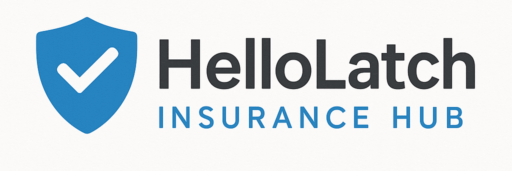
The insurance industry is one of the oldest and most established sectors globally, but it is not immune to the forces of digital transformation. In recent years, the emergence of InsurTech—short for Insurance Technology—has fundamentally changed the landscape for insurance providers in the United States. By leveraging advanced technologies like artificial intelligence (AI), big data, blockchain, and the Internet of Things (IoT), InsurTech is streamlining operations, improving customer experiences, and disrupting traditional business models. But what does this mean for insurance companies and their customers? Let’s explore how InsurTech is reshaping the US insurance market.
1. Revolutionizing Customer Experience
One of the most significant impacts of InsurTech is the dramatic improvement in customer experience. Traditional insurance processes often involve lengthy paperwork, slow claim processing, and complex policy management. These inefficiencies frustrate consumers and create barriers to seamless service.
InsurTech companies are addressing these challenges by offering user-friendly platforms and digital solutions. Consumers can now buy policies, submit claims, and manage their insurance needs directly from their smartphones or computers. Mobile apps and online portals have become the norm, allowing customers to easily compare quotes, access policy information, and track claims in real-time. Additionally, AI-driven chatbots provide 24/7 support, answering queries instantly, and enhancing the overall customer journey.
The ability to deliver real-time updates and seamless interactions is helping InsurTech startups to capture the attention of tech-savvy consumers who expect convenience and speed. This shift is pushing traditional insurance providers to adopt similar digital tools to stay competitive in a rapidly evolving marketplace.
2. Enhancing Operational Efficiency
In the past, insurance companies often relied on manual processes that were time-consuming and prone to error. InsurTech has introduced automation tools that streamline many of these operations. For example, AI-powered algorithms can handle claims processing, reducing the need for human intervention and speeding up decision-making. This results in faster claims approvals, which enhances customer satisfaction.
Additionally, InsurTech companies use data analytics to improve underwriting accuracy. By analyzing a wide variety of data points—such as social media activity, driving patterns, and wearable device data—insurers can assess risk more accurately and offer personalized pricing models. This not only leads to more efficient operations but also enables insurance providers to offer fairer and more tailored policies for individual consumers.
3. Shaping Risk Management
Another area where InsurTech is making waves is in risk management. Traditionally, insurance companies have relied on broad statistical models to assess risk and determine premiums. However, new technologies enable insurers to adopt a more personalized approach.
IoT devices, such as connected home sensors or telematics installed in vehicles, provide real-time data on the behavior and conditions of the insured. For instance, a policyholder with a car equipped with telematics could receive discounts for safe driving habits. Similarly, homeowners with smart smoke detectors could benefit from reduced premiums due to the lower risk of fire damage. By leveraging these data-driven insights, insurers can manage risk more effectively and reduce the frequency of claims.
This shift toward more dynamic and personalized risk management also benefits consumers. It encourages positive behavior, rewards safe practices, and creates an environment where policyholders have greater control over their premiums.
4. Driving Market Disruption
InsurTech is not just improving existing systems; it is also disrupting the traditional market model. New InsurTech startups are offering innovative products that challenge the status quo. For example, on-demand insurance policies allow customers to buy coverage for specific periods or events, providing a more flexible alternative to traditional annual policies. This model appeals to consumers who seek coverage for short-term needs or irregular situations, such as renting a car or traveling abroad.
Moreover, InsurTech firms are leveraging blockchain technology to create decentralized platforms that reduce the need for intermediaries, potentially lowering the cost of insurance for consumers. These advancements are forcing traditional insurance companies to rethink their business strategies and adopt a more customer-centric approach. Established players are increasingly investing in digital transformation, either through in-house innovation or partnerships with InsurTech companies.
5. The Future of Insurance: Collaboration or Competition?
As InsurTech continues to evolve, the future of the insurance industry will likely involve both collaboration and competition between traditional providers and tech-driven startups. Many established insurance companies are recognizing the value of InsurTech and are partnering with or investing in startups to gain access to new technologies. This collaboration can help incumbents remain relevant while offering more modern products and services to consumers.
At the same time, InsurTech firms will continue to challenge traditional insurance models, potentially reshaping the competitive landscape. As consumer demands for digital-first experiences grow, insurance providers who fail to adapt may struggle to retain market share.
Conclusion
InsurTech has undeniably transformed the insurance industry in the US, providing enhanced customer experiences, improving operational efficiency, and driving innovation in risk management. For insurance providers, embracing digital tools and technologies is no longer optional—it’s essential to stay competitive in a rapidly changing market. As InsurTech continues to evolve, it will be fascinating to see how both startups and established insurers work together to shape the future of the industry, creating a more personalized, efficient, and customer-focused insurance experience.

Zin Min
ကြေကွဲလူသား
What